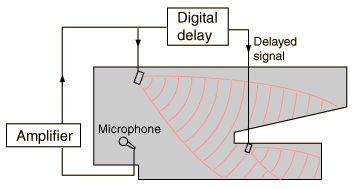Impedance Matching
As a general rule, the maximum power transfer from an active device like an amplifier to an external device like a speaker occurs when the impedance of the external device matches that of the source. That optimum power is 50% of the total power when the impedance of the amplifier is matched to that of the speaker. Improper impedance matching can lead to excessive power use, distortion, and noise problems.

| Microphone impedance matching | Amplifier impedance matching |
Sound reproduction concepts



